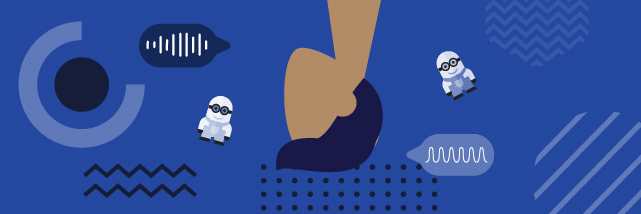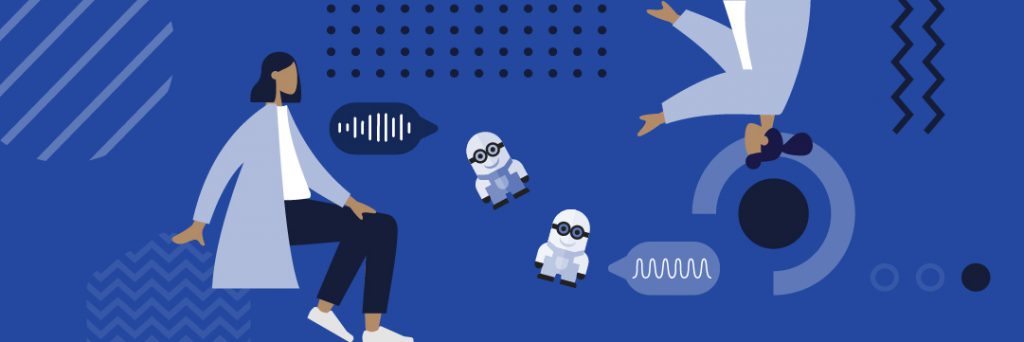The minion language. Did you just do a double-take? Don’t question yourself, you read that right. Here we are going to talk about the super cute minion language and relate it to language evolvement. You may learn something pretty fun, so, read on, friends!
Who are the Minions?
We like this definition from Buzzfeed: The Minions — small yellow creatures who dress in blue overalls and goggles — are an entertainment industry powerhouse. Simple, right? True, yes! They are the real stars of the Despicable Me movie franchise created by Universal under their Illumination production company, and they pretty much steal the show. In fact, they got their own movie, Minions, in 2015, and we will be seeing another one in the summer of 2021. They are adorable, silly, a bit childish, but weirdly smart. Not only are they cute with their cylindrical, bright yellow bodies and big, wide eyes, but they embody all we love, childish wonder, a little impulsivity, and endearing innocence.
There’s more to the Minions than belonging to the biggest animated franchise in history and global cultural phenomenon, though. You may think they all look alike, but those who look closely see differences like height and eyes and even clothing. Plus their personalities shine the more you get to know them. You can see combos of features like short and chubby or tall and thin; the small minions mostly have one eye, and there are quite a few of them with those distinct personalities, features, and even names. So you see, minions aren’t just a homogenous group of banana yellow creatures, they are a specific group of individuals…and yes…a language.
Language Evlolvment
Now any good linguist knows that languages are ever-evolving. We see it in vocabulary, slang, and even intonation. Think of the English language. When you listen to films from the 1940s, the actors just speak differently, right? Then you get to the ’80s, their tone is different yet again. Intonation fluctuates just like vocabulary and formality. Think about Downton Abbey. Sure, we know what Lord Grantham and Mary are talking about, but do we speak that way? Probably not, it’s on the, well, formal side. Our language has developed into a less formal structure. Often languages can morph together to create a new one, like Cajun being a mix of French and Southern English, or Quebecois, a morphing of French and Canadian.
And of course, there are words. So many words. Even this past year, we’ve seen rarely uttered words like social distancing and herd immunity become daily parts of our conversation. We often combine words into one, like bromance and frenemy. Language -it’s a miraculous thing.
Noam Chomsky says this, There are plenty of people in Europe who can’t talk to their grandmother because they talk a different language. That’s because of the evolvement of language. It’s constantly changing. He also says this:
A language is not just words. It’s a culture, a tradition, a unification of a community, a whole history that creates what a community is. It’s all embodied in a language.
So let’s look at the minion language.
The Minion Language
As Chomsky says, a language is a culture. And that is true of the minions. Sure, they are fictional creatures, but their language is distinct. In fact, it’s a combination of French, English, Italian, Spanish, and other languages. You’ll hear familiar words and phrases, plus some interesting new combinations. Their intonation is also part of what makes their language so unique.
Day Translations reminds us that fictional movie languages are nothing new.
There’s nothing new about the introduction of invented languages in the movies. Star Trek producers hired a linguist to create the Klingon language. It’s the same with the Pakuni in the Land of the Lost and Na’vi in Avatar. Linguists were called in to develop them.
In the case of the Minions, the language is reportedly only a creation of the film’s directors, who are not linguists or language enthusiasts. The directors, Pierre Coffin and Chris Renaud, even dubbed the Minions’ voices in the Despicable Me films. In other words, Universal did not hire a linguist to invent Minion-speak.
Not only are these familiar languages incorporated into the minion language but so are some of our favorite words, words related to food. We love a fun language and unique words, don’t we? And though there is no real name for the minion language full of its own unique sounds, many people call it Minionese. See, another word right there coined from culture.

Key Characteristics of the Minion Language
What is so interesting about this language from a linguistical point of view, is the way words are created. And we can learn so much from it. Remember how way back in preschool you went to Safety Town to learn how cities function in a small, relevant way? Well, the Minion language is full of key takeaways to make learning a language a little more fun and even relevant. Perhaps you can even look at the Minion language as a dialect or a morphed language like some we mentioned. Whatever the case may be, let’s look at some of those key characteristics.
Demi-onomatopoeias
Merriam Webster tells us an onomatopoeia is the naming of a thing or action by a vocal imitation of the sound associated with it (such as buzz, hiss).
And minions use this technique, too. For whatever reason, it’s referred to as demi onomatopoeias and is the use of words that emulate the sound of the things or events they represent. Like kiss kiss is muak muak muak.
Intentionally Mispronounced Words
The minions often mispronounce words. But in their language, the words are pronounced correctly. This could be a metaphor for how language and dialect evolves. As more and more people learn more and more languages and multilingualism becomes more common, you will probably hear more words being pronounced in multiple acceptable ways. That’s what accent and dialect are all about, right?
Or we don’t need to overthink it. Keep in mind what Minions director Pierre Coffin said about the language. Coffin calls the language silly and thinks it’s even funnier when the audience think that the Minions are really communicating with the gibberish they utter. In short, don’t overthink it.
Minions in Popular Culture
The minions have made their way from the Despicable Me films to their own film to popular culture. You see them everywhere, from memes to posters in classrooms and Pinterest. Teachers use them as educational tools in classrooms from helping preschool children learn body parts to conjugating verbs.
People love emulating the minion language, and it’s actually not a bad way to practice accents. We know that the ability to learn accents and different dialects takes a lot of training, patience, and voice talent. As many people say, the best way to learn a foreign accent or dialect is to speak it. Listening is crucial and no matter the accent you’re going for, practice makes perfect. People learn languages and accents through film and TV. Many a person has perfected their British accent by watching Harry Potter and picked up some Spanish phrases from watching Spanish daytime TV.
Perfecting the minion language could come in handy for birthday parties or Halloween costumes starring minions.
Our Favorite Minions
We can’t have a read on minions without mentioning some of our favorites. So, let’s take a look at some of these cute guys. First, we have Stuart, a one-eyed minion who is playful, friendly, intelligent, and funny. He likes to chill out and play his ukulele, and he’s often hungry. As far as animated characters go, we love this guy. Next, we have Dave. Dave is a smart minion who has two eyes and is loving, smart, and funny. Stuart and Dave are great friends. Another favorite is Jerry, a short two-eyed minion. He’s pretty sensitive and gets scared easily; we love him all the same.
It’s so fun to see all of the minions who at first seem to blend together. But as you watch the films, you see the personalities come out, the language they all use, and their endearing qualities. We bet you have a favorite minion, too.
Translation Services
Speaking of the minion language, we can’t help but think of translation. Though you may not need a translation service to understand the minions, you may need one for something else. We’d love to help with that if you need a translation, minion or not. Our translation experts are professional, skilled translators who have high standards and top-notch work. Please reach out to us at Bunny Studio if you’d like to learn more. We may not have minion translators, but we have pretty much any other language you need.
We also have excellent voiceover services if you do need a minion voice for a project you’re creating. Check those out, too. Maybe you’d love a minion recording or birthday greeting for your favorite minion fan.
The Big Takeaway on Minion Language
Though the minion language is a created fictional one, it mirrors a lot of the points of language evolvement. We know languages have different dialects, accents, pronunciations, and cadences. Languages continually morph, spread, and combine with others to make new languages. The minion language could be a great metaphor for language itself.
As this article shares:
Minions are the best and worst things about kids, painted in the brightest colors: They’re pure id, and they’re also pure joy. They’re prone to distraction, but they’re unceasingly devoted. They can be selfish, but also willing to work together toward a common goal. They’re hilarious, infuriating, and wonderful all at once, just like kids.
So whether the adorable minions remind you of making up your own childhood language, wearing your emotions out loud, or being who you are in all of your glory, embrace the minions. Listen to their language, and feel the freedom of emotions, friendship, and innocence. Plus you might learn a new word or two.










